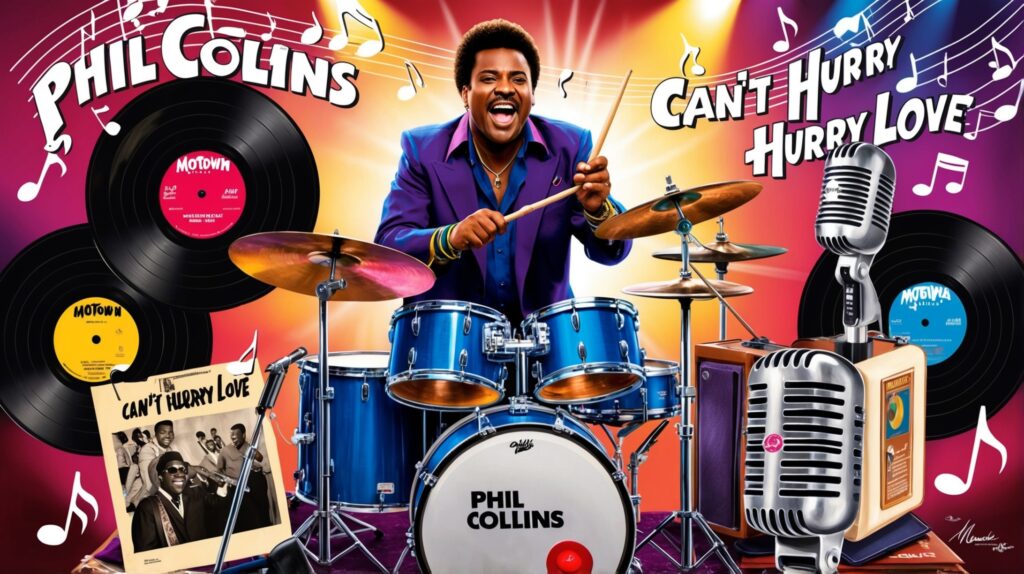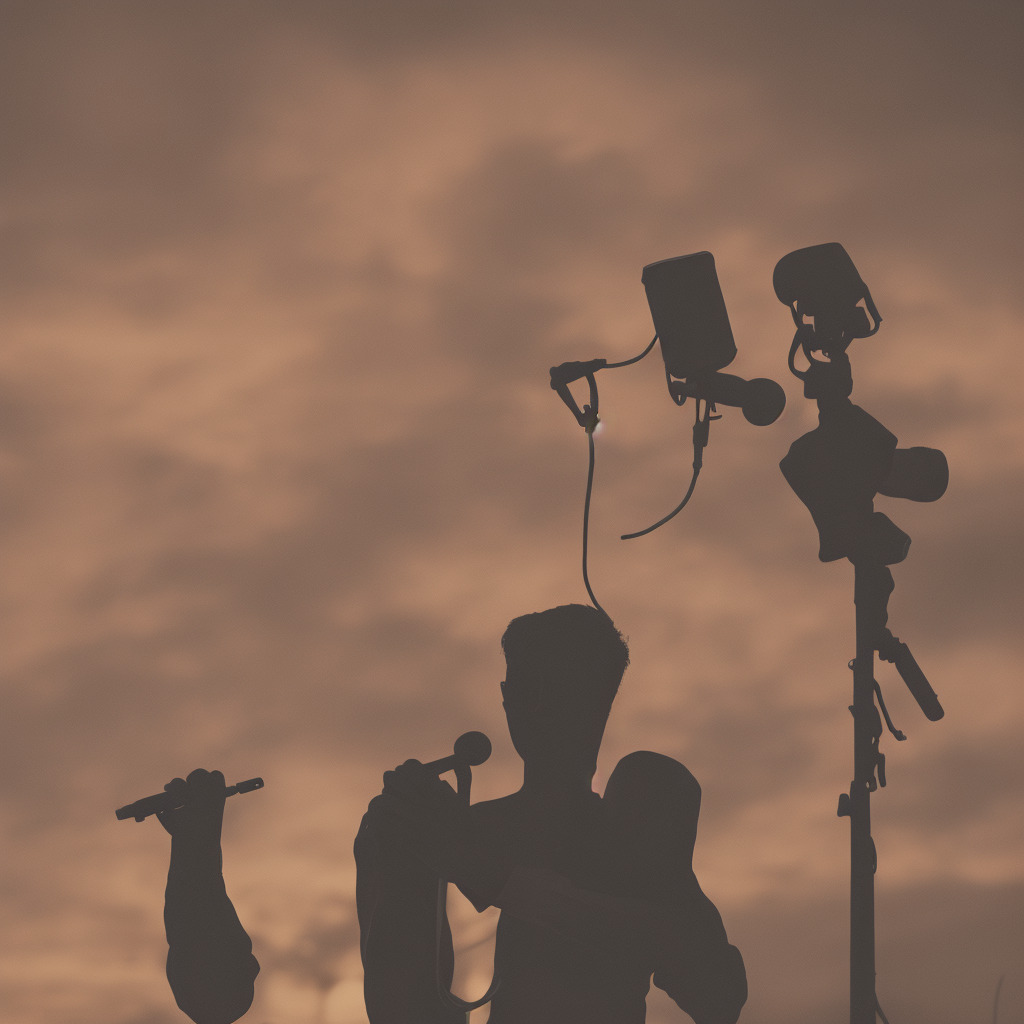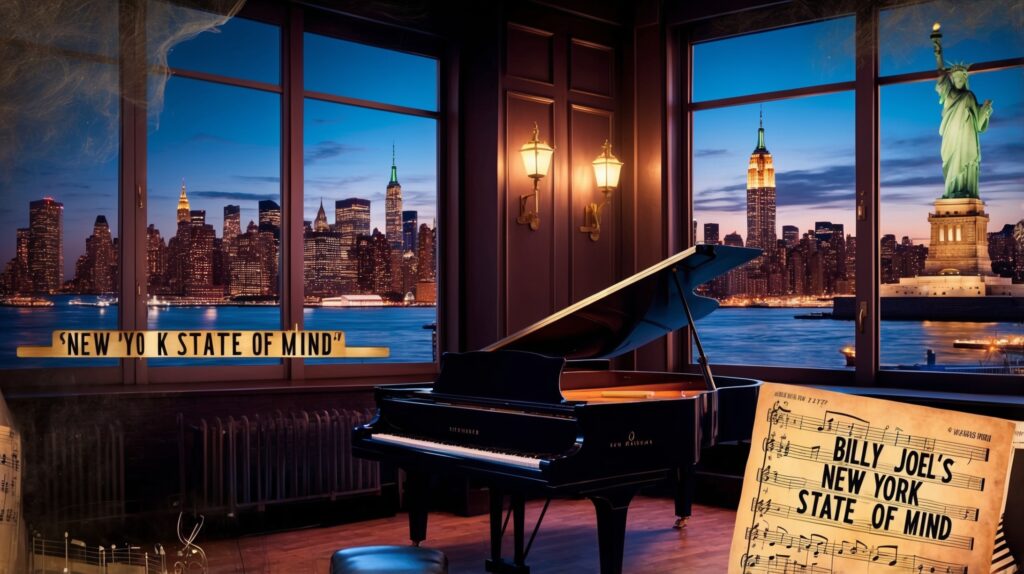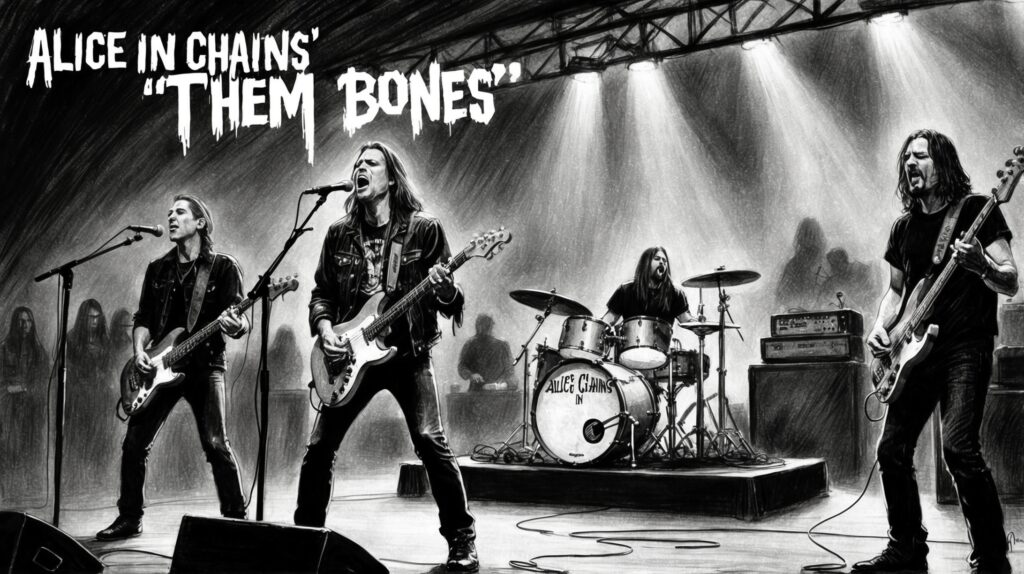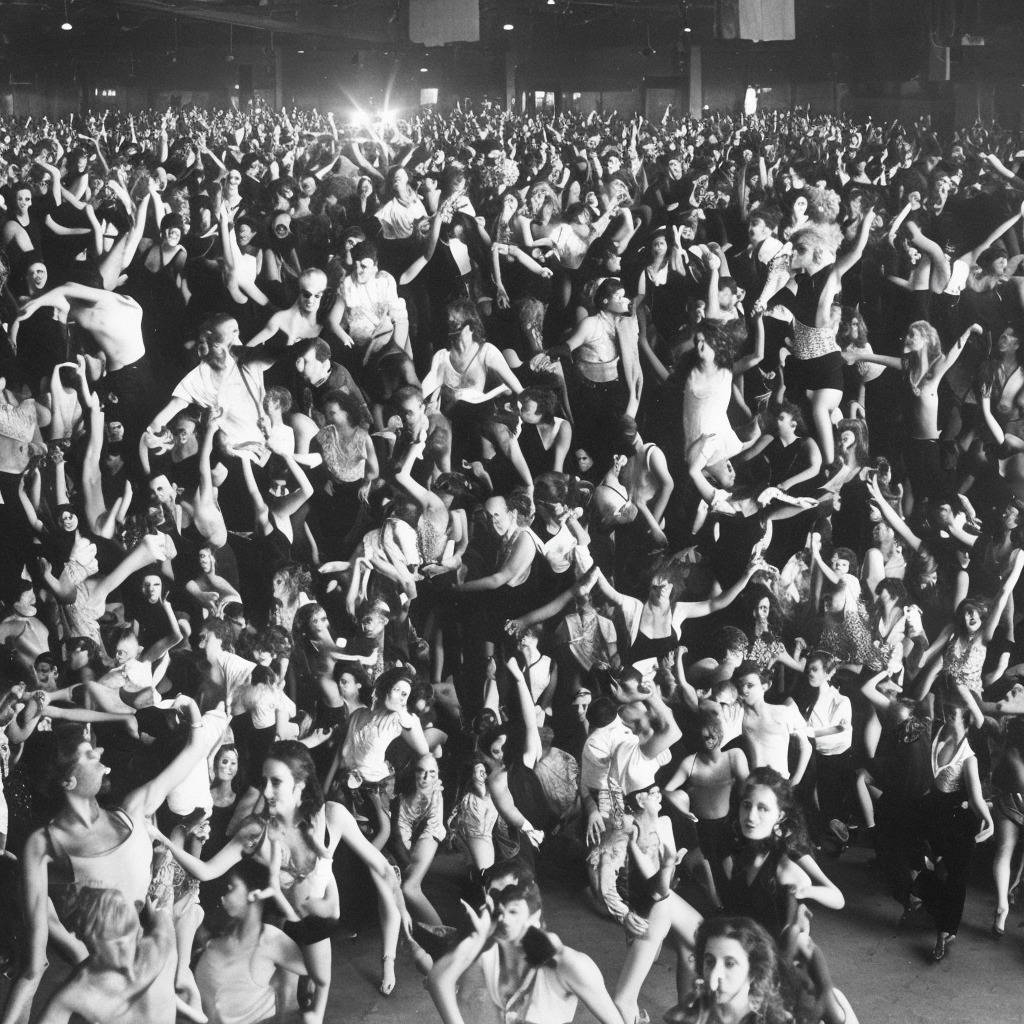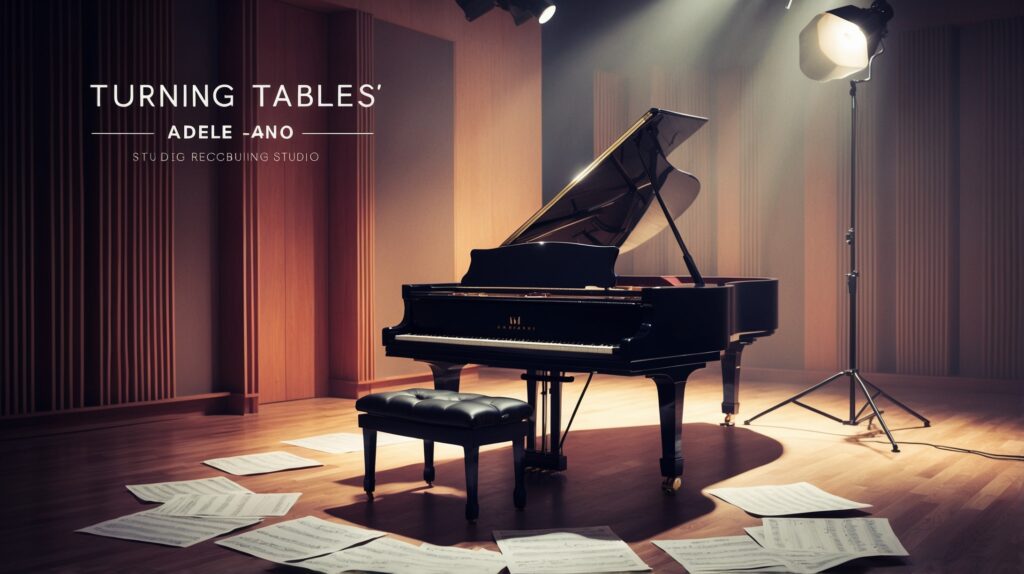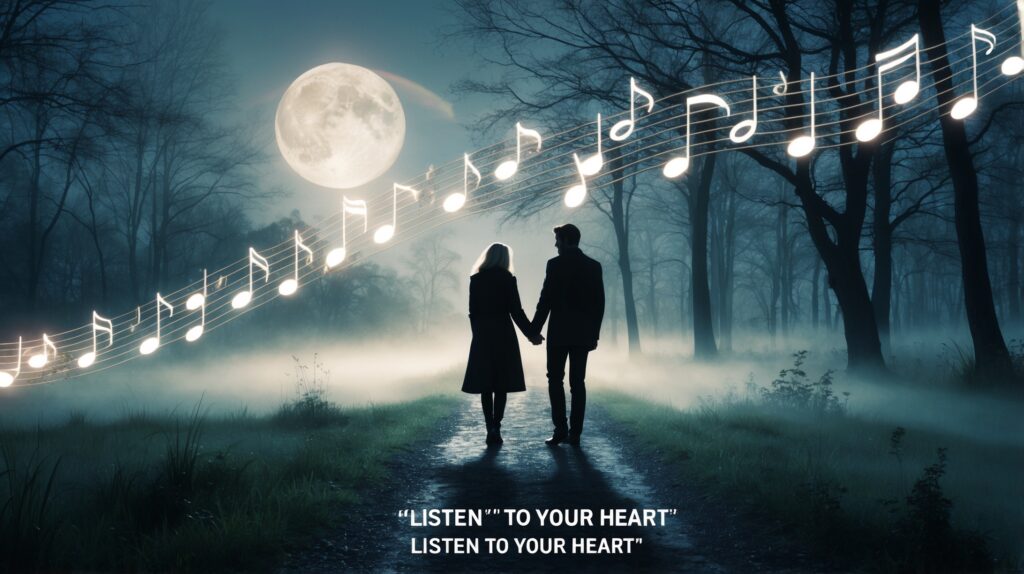Phil Collins: A Drumming Maestro Turned Pop Icon
Phil Collins, once a key figure in Genesis, emerged as a solo powerhouse. His rendition of “Can’t Hurry Love” showcased his knack for revitalizing classics.
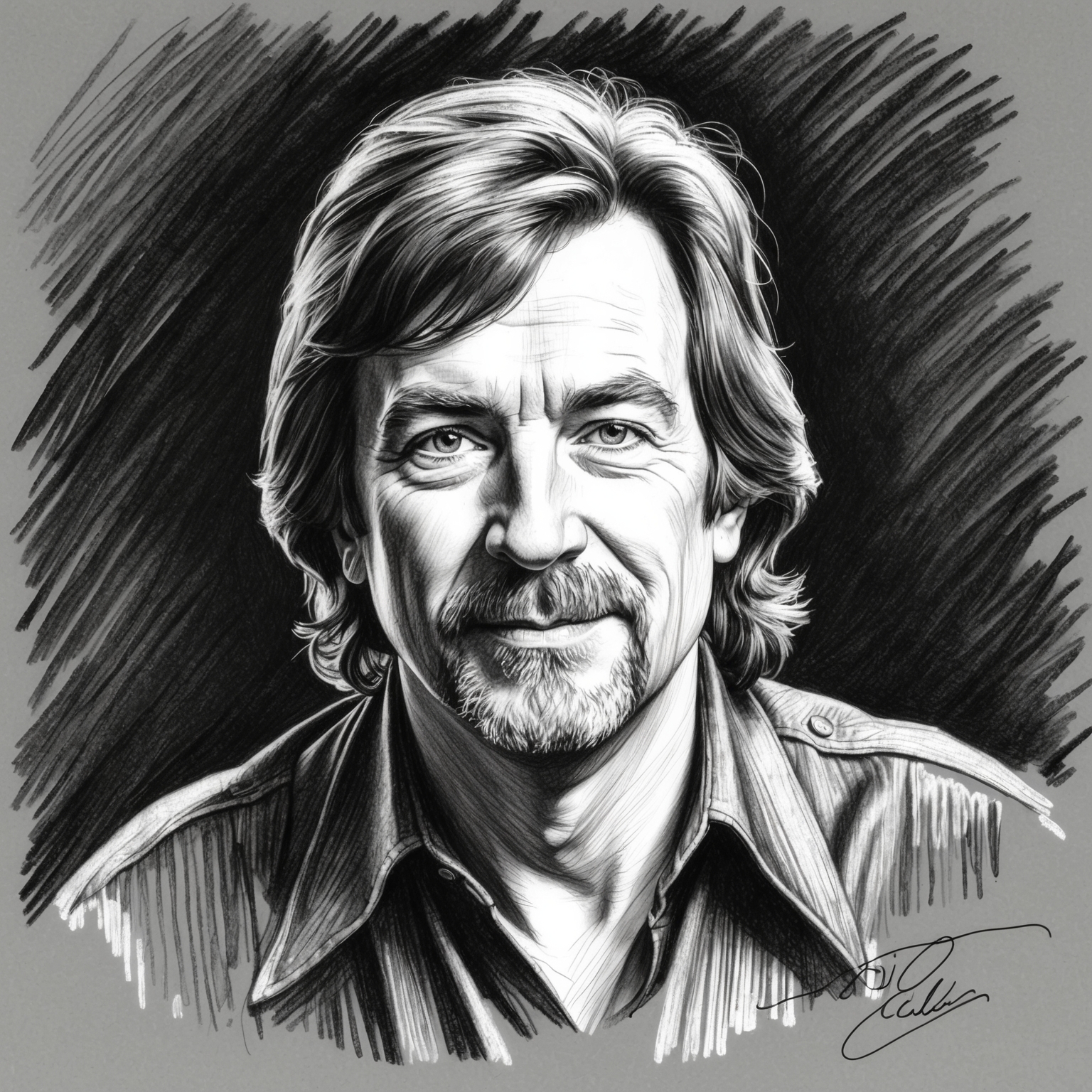
Phil Collins is not just a name but an indelible part of music history, carving out a niche as both a dynamic drummer and a captivating vocalist. Originally making his mark with the progressive rock band Genesis, Collins embarked on a solo career that catapulted him into superstardom. His rendition of “Can’t Hurry Love,” a song originally by The Supremes, signifies Collins’ ability to instill life into classic tunes while offering them a fresh perspective. His unique musical touch fused elements of pop and rock, making them universally appealing.
Born on January 30, 1951, in Chiswick, London, Phil Collins entered the music scene with vigor. Showing an innate love for drums at a young age, Collins was destined for musical greatness. Before the world knew him as the powerhouse behind Genesis, he honed his skills playing for various bands. Collins’ time with Genesis during the 1970s and 80s was marked by creative experimentation, which laid the foundation for his later solo endeavors.
In the era surrounding the release of “Can’t Hurry Love” as part of his 1982 album “Hello, I Must Be Going!,” Phil Collins was already enjoying prior success with his debut solo album. By interpreting this Motown classic through his distinct artistic lens, Collins showcased his versatility and ability to engage with cross-genre collaborations. This period solidified his status as a significant contributor to music, blending his instrumental prowess with a melodious voice that resonated across generations.
The Talented Minds Behind ‘Can’t Hurry Love’
Discover the genius behind the classic ‘Can’t Hurry Love,’ composed by Holland–Dozier–Holland, the legendary team that defined Motown.
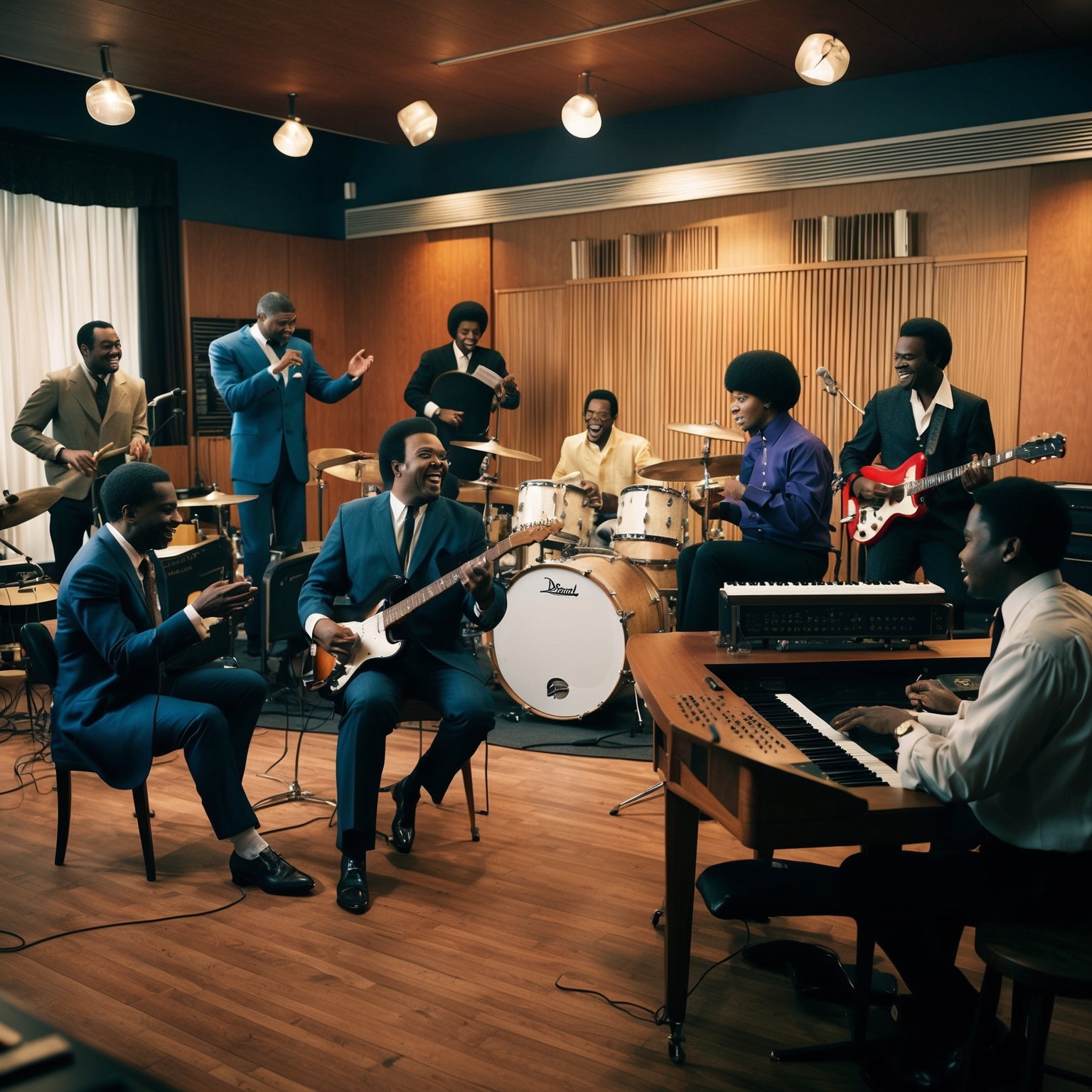
The song ‘Can’t Hurry Love’ by Phil Collins might sound familiar to many, and that is largely because it’s a timeless classic covered from the original recording by The Supremes. The genius behind the song’s creation goes back to the legendary songwriting and production team known as Holland–Dozier–Holland. Comprised of Brian Holland, Lamont Dozier, and Eddie Holland, this team was instrumental in shaping the sound of Motown during its golden years. Growing up in Detroit, these composers honed their musical skills in an environment rich with African American culture and creativity, influences that are deeply embedded in their work.
The distinctive musical style of Holland–Dozier–Holland is characterized by catchy melodies, rhythmic richness, and emotionally poignant lyrics. They were inspired by the gospel, blues, and the burgeoning pop scene of their time, contributing to what we now recognize as the ‘Motown Sound’. This song, like many of their works, features a driving beat and memorable hooks that make it instantly recognizable and infectious.
In terms of collaboration, Holland–Dozier–Holland were a dynamic trio that seamlessly fused lyrical and musical ideas to create hit after hit. With ‘Can’t Hurry Love’, their composition enabled Phil Collins to channel its upbeat and heartfelt energy, blending his distinctive style with their classic Motown vibe. This collaboration was crucial, as it allowed the song to transcend its original era and become relevant for new audiences.
Celebrated Legacy and Influential Covers
Phil Collins’ version of “Can’t Hurry Love” celebrates a legacy beyond awards, with influential covers and appearances in popular culture.<
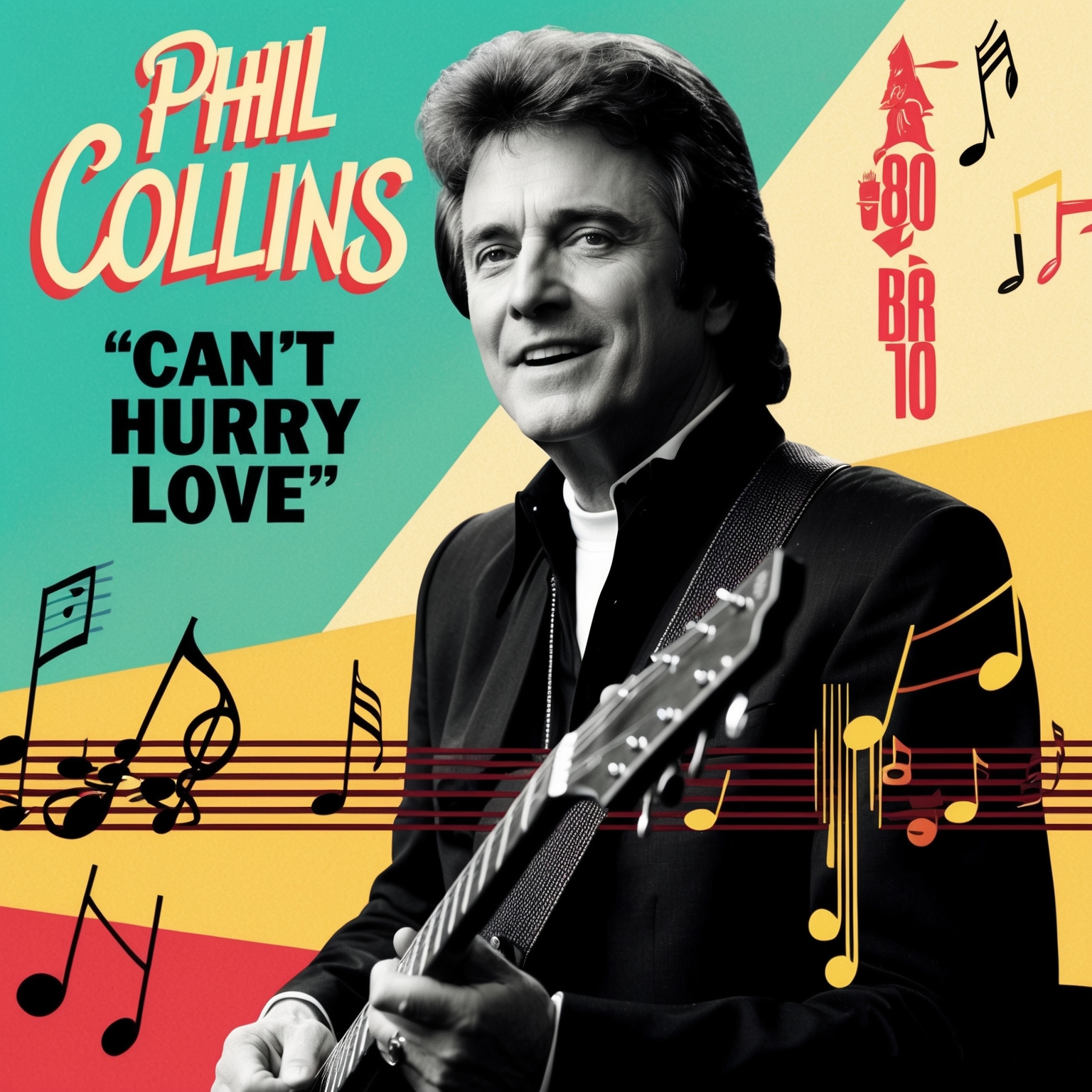
Despite being a cover itself, Phil Collins’ rendition of “Can’t Hurry Love” has had a significant impact and has been celebrated in various ways. Originally performed by The Supremes and released in 1966, Phil Collins’ 1982 cover brought the song into a new era. His version climbed the charts and resonated with both old fans and new listeners. While it might not have garnered specific awards on its own, the cover’s success and recognition have cemented Collins’ ability to reinterpret classic hits in a fresh and appealing manner.
“Can’t Hurry Love” has also been covered by multiple artists over the years, each bringing their unique style to the iconic tune. The Dixie Chicks offered a country twist to the Motown classic, while Boyz II Men provided a soulful, harmonized rendition. Even modern pop acts have tackled the song, demonstrating its timeless quality and broad appeal across genres and generations.
Beyond its presence on various music charts, “Can’t Hurry Love” has also found its way into popular culture through appearances in films and television series, contributing to its lasting legacy. Its energetic beat and catchy chorus have made it a popular choice in movies and shows depicting scenes of joy, love, and occasionally comedic moments. While specific accolades for these placements are rare, such features further reinforce the song’s enduring influence in contemporary media.
The Chart-Topping Journey of ‘Can’t Hurry Love’
Phil Collins’ cover of “Can’t Hurry Love” embraced Motown nostalgia while securing respectable positions on global music charts, cementing Collins’ versatility and appeal across generations.
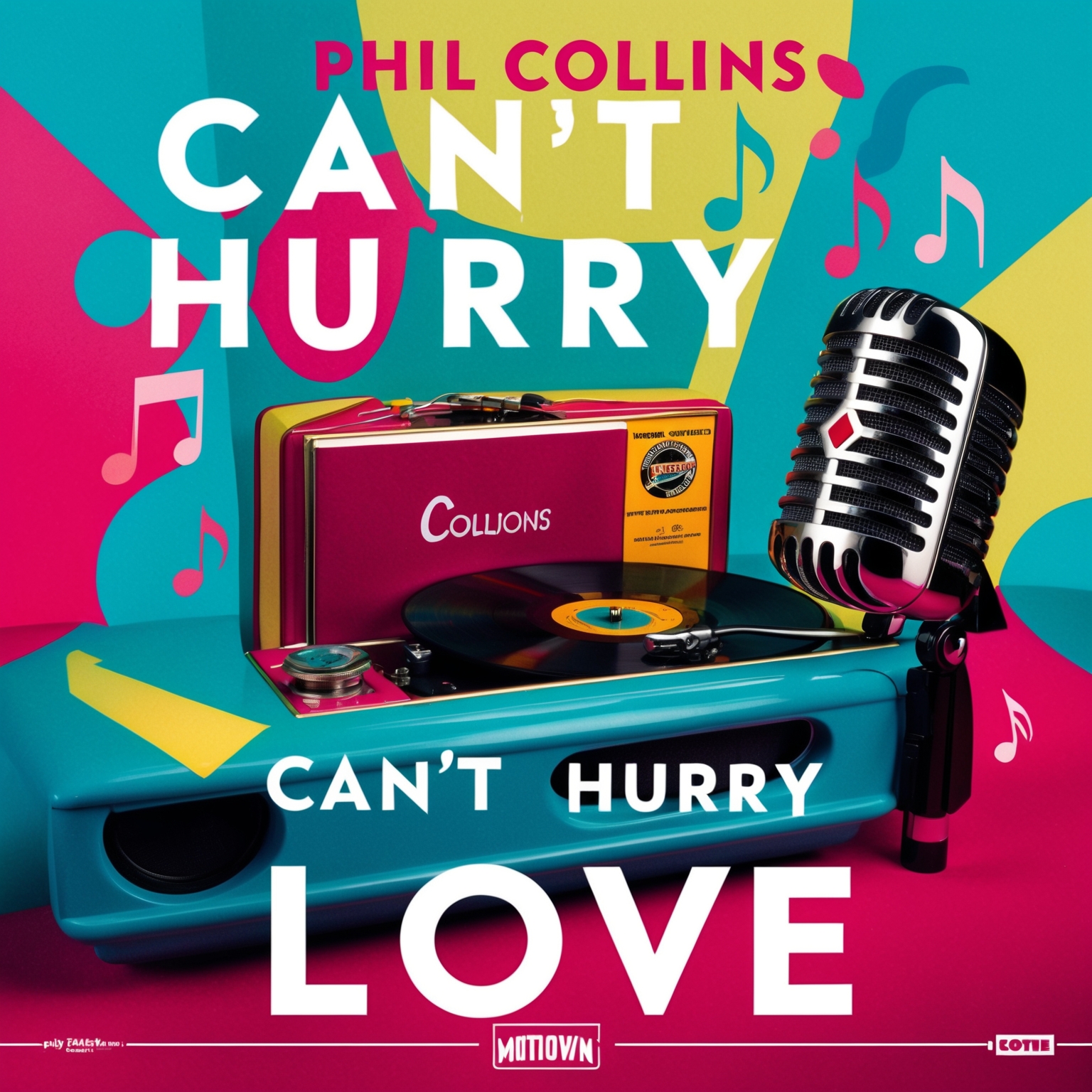
Phil Collins’ rendition of “Can’t Hurry Love,” originally a classic Motown hit by The Supremes, was released as part of his “Going Back” album in 2010. This cover was a nod to the timeless magic of Motown, which Collins admired greatly. While the song itself is steeped in history, Collins’ version brought a fresh wave of attention to the track, showcasing his unique ability to bridge the gap between eras of music.
Upon release, “Can’t Hurry Love” managed to capture the nostalgia of long-time fans while also introducing a younger audience to the soulful sounds of Motown. The song broke into various music charts around the world, indicating its universal appeal. It climbed into the top ten of the UK Singles Chart and secured impressive positions in other European markets. While it did not reach the towering peaks of some of his solo originals, the song reaffirmed Collins’ grasp on creating recognizable hits, even when walking the tightrope of classic covers.
Collins’ history of producing number-one hits set high expectations, and “Can’t Hurry Love” delivered in terms of maintaining his legacy as a chart-successful artist. Though not a reinterpretation meant to capture chart dominance, it successfully leveraged Collins’ star power to honor a timeless hit. The promotion was strategically aligned with the Motown revival feel, employing nostalgic visuals and promotional campaigns that mirrored the classic sounds of the 60s, drawing interest across generations.
The Visual Journey of ‘Can’t Hurry Love’
Although lacking an official music video, Phil Collins’s ‘You Can’t Hurry Love’ thrives in live performances and fan videos, enhancing its enduring appeal.
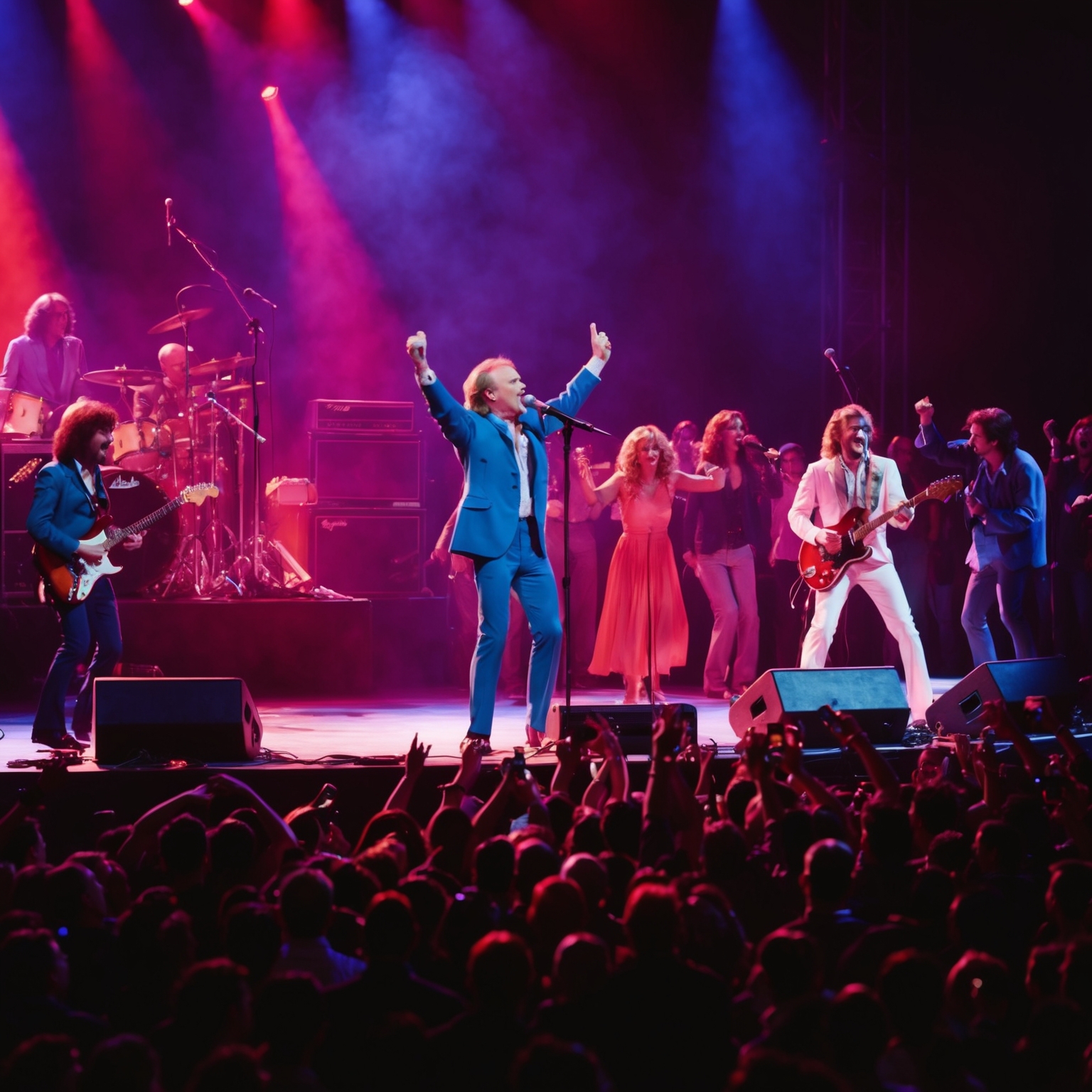
Phil Collins’s rendition of ‘You Can’t Hurry Love’ may not have an original music video specifically crafted for it, as it was during an era when videos were still emerging as a promotional tool. However, the song’s timeless appeal and Collins’s charismatic performance have led to several alternative visual explorations. Notably, the song has been featured in numerous live performances by Collins. These appearances showcase his energetic presence and talented musicianship, often characterized by his dynamic drumming and engaging interaction with the audience. These performances contribute significantly to the song’s enduring popularity, creating vivid memories for fans around the globe.
Furthermore, fan-made videos and montages are abundant, utilizing clips from Collins’s performances or other relevant visuals to create engaging narratives. These creative endeavors demonstrate the song’s universal resonance and the personal connections that listeners forge with it. Although unofficial, these fan interpretations add new layers of meaning and offer fresh perspectives for viewers to enjoy.
Another dimension to consider is the reception of these visual representations. Critics and fans have often remarked upon the effective translation of the song’s buoyant energy to a visual medium. While not crafted by renowned directors or featuring A-list cameos, the simple yet charming visuals paired with Collins’s music enhance the overall experience of ‘You Can’t Hurry Love,’ allowing it to continue captivating new audiences even decades after its release.
Decoding the Musical Blueprint of ‘Can’t Hurry Love’
Delve into the technical mastery behind Phil Collins’ ‘You Can’t Hurry Love,’ exploring the song’s key, tempo, and instrumentation, and its place within Collins’ evolving musical journey.

Phil Collins’ rendition of ‘You Can’t Hurry Love’ is a faithful cover that maintains the spirit of the original while showcasing Collins’ unique take on the iconic track. The song is played in the key of E major, a choice that gives it a bright, uplifting quality. Throughout the song, the chord progression echoes the pop and Motown influences, cycling through E, B7, C#m, and A which contribute to its catchy, timeless appeal. The tempo is upbeat, approximately 171 beats per minute, providing an energetic rhythm that’s perfect for the danceable vibe that defines this classic hit.
The melodic structure of Collins’ version stays true to the original’s catchy hooks while adding his nuanced vocal delivery. The harmony is supported by a rich blend of instruments, including a strong bassline, vibrant brass sections, and rhythmic drum patterns. This careful orchestration ensures that the song retains its original powerhouse essence while allowing Collins’ own artistic expressions to surface. The use of synthesizers and electric guitars further augments the track, adding a more modern rock/pop-infused flair compared to the song’s Motown roots.
‘You Can’t Hurry Love’ serves as an intriguing point in Phil Collins’ discography, reflecting a moment where his solo career was solidifying its identity within the pop music sphere. Prior to this track, Collins was prominently known for his work with Genesis, which explored more progressive rock textures. In this cover, Collins pays homage to the traditional pop song structures while embracing contemporary production techniques, signifying a pivotal turn in his personal musical journey towards more mainstream pop influences. Additionally, the cover was produced by Phil Collins himself along with Hugh Padgham, a collaboration that consistently delivered high-quality sound in Collins’ other works.
Delving Deep into the Lyrics of ‘Can’t Hurry Love’
Explore the lyrical nuances of Phil Collins’ ‘Can’t Hurry Love’, delving into its themes of patience and love’s complex nature.
Ooh, ease my mind
And I need to find time
Someone to call mine
My mama said, “You can’t hurry love
No, you’ll just have to wait”
She said, “Love don’t come easy
But it’s a game of give and take”
You can’t hurry love
No, you’ll just have to wait
Just trust in the good time
No matter how long it takes
How many heartaches must I stand
Before I find the love to let me live again?
Right now the only thing that keeps me hanging on
When I feel my strength, yeah, it’s almost gone
I remember mama said
“You can’t hurry love
No, you’ll just have to wait”
She said, “Love don’t come easy
It’s a game of give and take”
How long must I wait
How much more must I take
Before loneliness
Will cause my heart, heart to break?
No, I can’t bear to live my life alone
I grow impatient for a love to call my own
But when I feel that I, I can’t go on
Well, these precious words keep me hanging on
I remember mama said
“You can’t hurry love
No, you’ll just have to wait”
She said, “Love don’t come easy
But it’s a game of give and take”
You can’t hurry love
No, you’ll just have to wait
Just trust in a good time
No matter how long it takes
Now wait
Now love, love
It don’t come easy
But I keep on waiting
Anticipating for that
Soft voice
To talk to me at night
For some tender arms
To hold me tight
I keep waiting
Ooh, till that day
But it ain’t easy (Love don’t come easy)
No, you know it ain’t easy
My mama said
“You can’t hurry love
No, you’ll just have to wait”
She said, “Love don’t come easy
But it’s a game of give and take”

Phil Collins’ rendition of the classic song ‘Can’t Hurry Love’ brings the timeless message of patience in romantic pursuits to the fore. This track, originally performed by The Supremes, extends its lyrical wisdom from the perspective of seeking enduring love. The primary theme of the lyrics revolves around the anticipation and trials of waiting for true love. As the words suggest, ‘You can’t hurry love, no, you’ll just have to wait,’ it’s clear that the narrator is reflecting on the importance of patience and persistence in finding a meaningful connection.
The narrative structure of the lyrics presents a compelling dialogue between a child and their mother, where the latter imparts essential life lessons. The repeated use of the mother’s wisdom highlights not only the personal nature of the song but also the universal truths within it. Collins’ delivery of the song adds an emotional depth that emphasizes the trust and comfort one might seek from maternal guidance. By maintaining a conversational style, the song mirrors the introspection and longing many people experience in their quest for love.
Analyzing literary devices, the lyrics harness metaphors and repetition to accentuate their message. The metaphor of love as a ‘game of give and take’ encapsulates the dynamic and reciprocal nature of relationships. The repetition of the phrase ‘You can’t hurry love’ serves both as a reminder and a mantra, reinforcing the central message throughout the song. This use of repetition not only instills the message firmly but also invites listeners to reflect on their own experiences of waiting for love to blossom.
In comparison to other works by Phil Collins, ‘Can’t Hurry Love’ stands out due to its adherence to a positive, reassuring message conveyed through a catchy melody. While many of his songs explore themes of solitude and introspection, this track remains buoyant and hopeful, aligning it more closely with upbeat Motown influences than with melancholic rock ballads. The cultural resonance of the song lies in its ability to connect across generations, echoing the timeless lesson that love’s journey is often more significant than the destination.
Phil Collins brings Motown magic to life with his 1982 cover of Can’t Hurry Love. Did you know it was The Supremes’ hit first? ?? #PhilCollins #MotownMagic #80sVibes tinyurl.com/2nf8kmat
Click to Tweet

